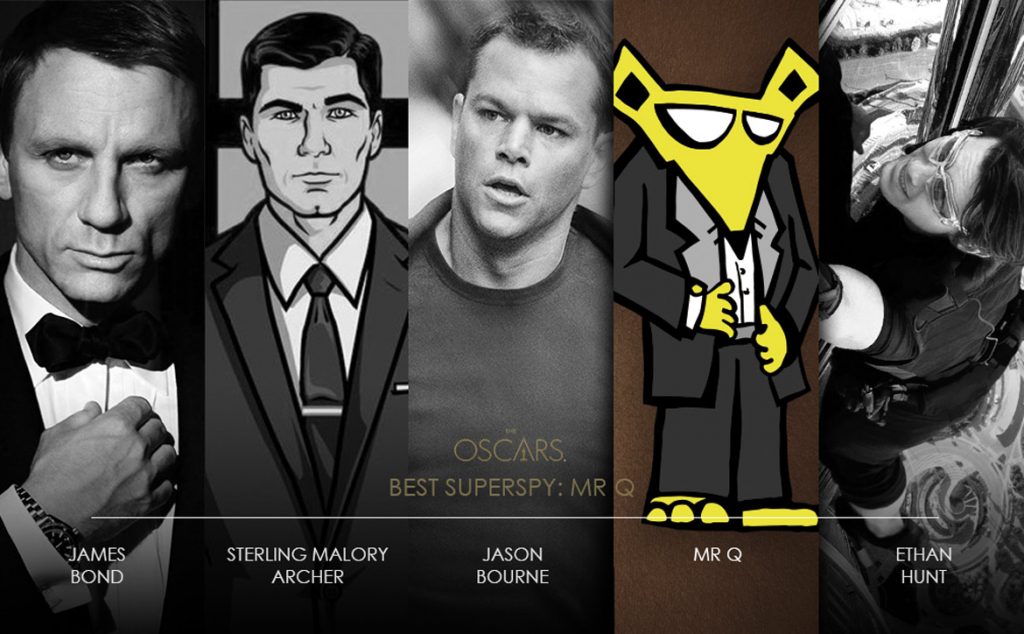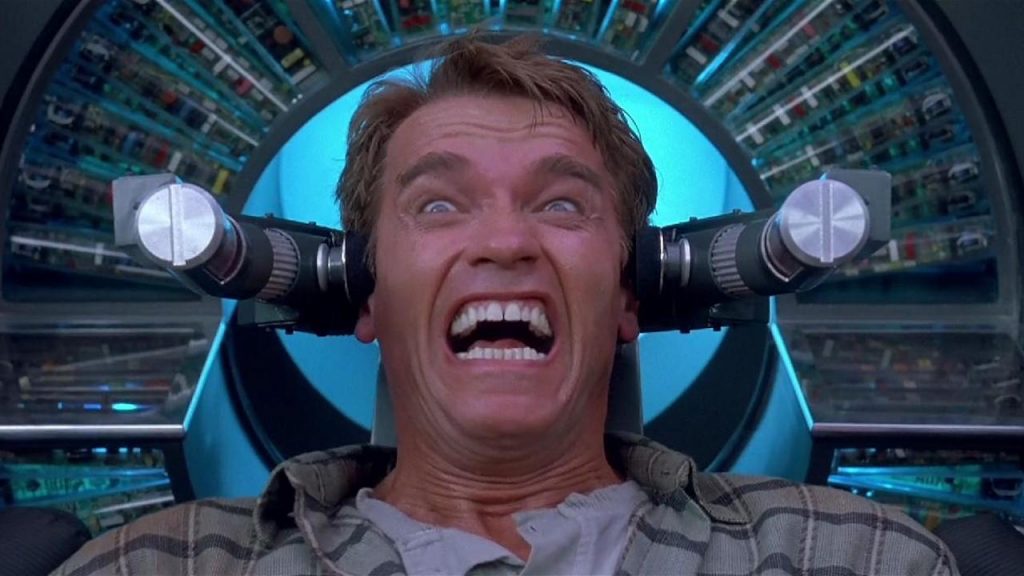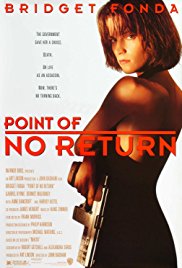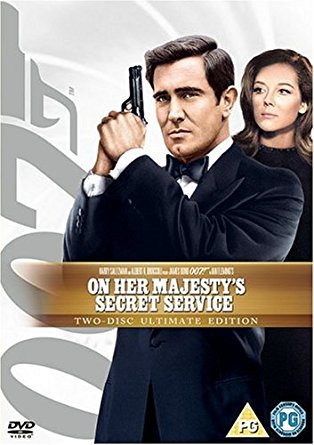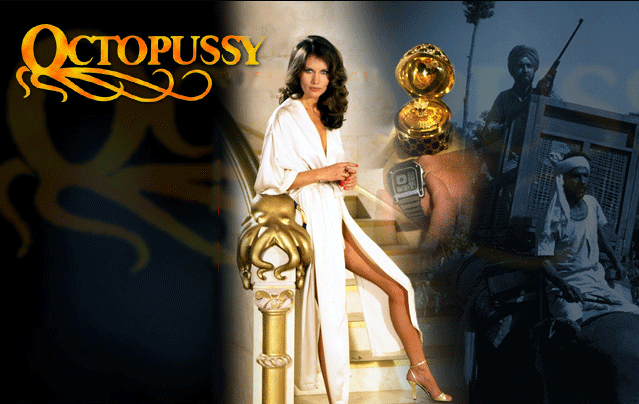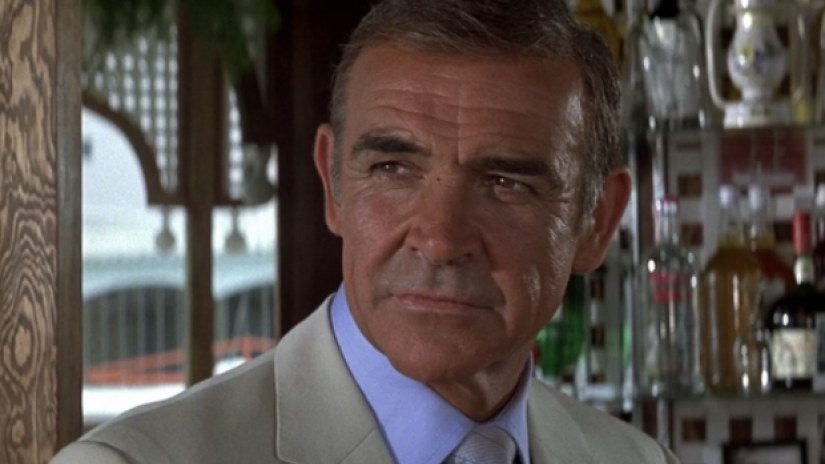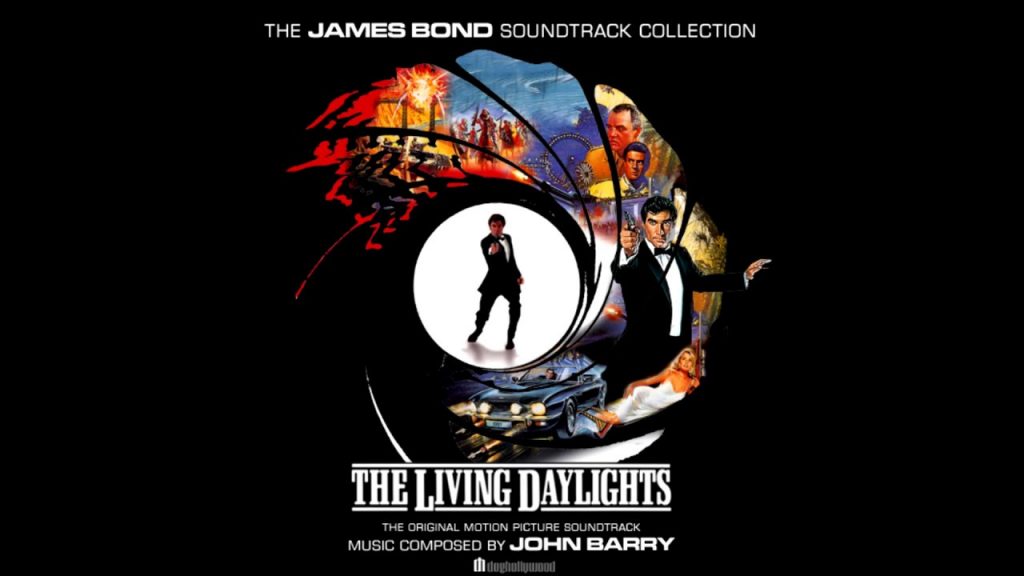 Some Mild Spoilers inside our review of the Latest 007’s Style
Some Mild Spoilers inside our review of the Latest 007’s Style
The World Is Not Enough takes chances and works new combinations for James Bond. Like Star Wars: Episode I, hardcore franchise fans have plenty to applaud. Pleasant surprises, espionage intrigue and plot twists fill TWINE. A Brosnan film that echoes O.H.M.S.S. and License To Kill is a wild idea! From inside EON’s goodie bag come freshened ideas to churn up even hardened devotees to feel stirred if not shaken. TWINE works on many levels as a psychological thriller with more of Bond’s brains and heart in evidence than gadgets.
The teaser sequence is masterful through M’s office scene, taut and reminiscent of the very best GoldenEye to offer. The following boat chase goes a tiny bit over-the-top, somewhat long but extremely well filmed, funny and suspenseful and with a radically satisfying segue into Daniel Kleinman’s gorgeous credits. Luckily, not much else goes overboard for the next two hours, we are glad to report, and though Bond flies through the air and water like Superman, (“You were expecting someone else?”) TWINE’s Bond is a genuine human being as well.
Speaking of humankind, the villains are quite human in scope, right for the self-indulgent feelings-not-facts of the late 1990’s but different from the typical Bond-level pitch. Goldfinger, Mr. Kidd and Emilio Largo loved to torture Bond, just because they were evil bad guys, while Trevelyan, Carver and Renard have pasts and motivations, for goodness’ sake. Renard finds far less concern from the bullet in his brain than from his case of existentialist angst. In a risky move that often works, head write Bruce Feirstein and crew respond to the fans who have noticed that never again will there be a villain as juicy as Ian Fleming’s megalomaniacs or Richard Kiel’s Jaws, by avoiding them entirely. A hulking henchman of Elektra King’s who looks just right for five solid minutes of hand-to-hand combat in an elevator or train with 007 is dropped fast off-screen—a poke at 007’s being some kind of amazing martial artist!
The nagging feeling longtime franchise fans encounter watching this movie may also be because not one bad guy gets chopped into pieces, eaten by piranhas or drowned in steaming mud or bird guano. They are mowed down with bullets, and often by Bond’s point blank use of his license. Bond, of course, for the 21st movie in a row, folks, including Casino Royale and Never Say Never Again, is captured by his enemies at least once, which along with the fact that everyone knows his name and number at the grocery store, helps make him the world’s most unlikely secret agent to love, God bless him. (“007 is my best agent. But I will never tell him that because he gets captured on every mission.”)
Having said all that, dear readers, we affirm the vivid suspense and tension in this one. Bond is danger in the nuke scene with Renard and in the teaser with the venomous “Gulietta” is solid in intensity and top stuff. Plus you get great in-jokes in both scenes! Anyone who does not like “What’s your name?” “My name is Bond, (long pause, rockets up and away like Connery in Thunderball) James Bond” isn’t breathing!
Speaking of nagging feelings in a good way, Brosnan’s Bond is “living on the edge” in a solid way. As Brosnan said in a recent TV Guide issue, “I do work here!” He echoes Timothy Dalton with pain etching his face when the Mrs. is alluded to, and snarls, grimaces and mugs for the camera, much to the delight of all, for two hours and eight minutes straight. Bond is cheated on and lied to and Bond makes mistakes (“We count two, cars and cards…Q is going to be mad.”). Bond gets mad himself, Bond gets bloodthirsty, Bond exacts revenge, Bond is in smokin’ hot pursuit. Brosnan wisely fingers the facial scar he earned filming Tomorrow Never Dies while contemplating his moves, he looks like Bond, a touch of gray at the temples.
Even the trend since For Your Eyes Only towards building a better Bond girl is moved along rather nicely with this series entry. Unlike GoldenEye, where Natalya Simonova’s character develops complexity by showing temerity and skill in a 15-minute Severnaya subplot, Elektra King and Dr. Christmas Jones need even closer watching when Bond moves off-screen, specifically because what they are doing or might not be doing does not revolve around a space satellite but around Mr. Bond himself, as it should be. Feirstein’s final script holds more crosses and double-crosses, and M has more hidden agendas, than in a John Gardner novel, and it all works, every last drop of it.
We can’t say enough about Sophie Marceau’s work, and glowing comments are being made about her portrayal worldwide, so we will restrict ourselves to saying she is the best thing since Maud Adams as Octopussy, maybe even Honor Blackman as Pussy Galore! It was an ultra-clever inside move to see her use ice twice, once to send Bond on a mission and once to bring to mind the fire and ice Largo uses in Thunderball for “heat and cool, pain and pleasure”. Robert Carlyle does a fantastic job with non-verbal emoting and facial expressions when he cannot feel or achieve pleasure in the ice scene. Marceau’s first–rate psychotic who is “too beautiful to die” was a fans’ dream character made real. Denise Richards’ screen presence does not loom very large, but before everyone pans her as Dr. Christmas Jones, we must affirm that her acting was fine and that she is far more delectable for Bond to spend an evening with than, say, her first cousin, Indiana.
Henchman, M’s staff, (including “Charles Robinson” and “Bill Tanner” in the same movie!) gals and minor characters keep Bond hustling on his mission as he runs through more people’s lives than exotic locales. It is nice to watch a James Bond film so replete with characters and plot lines. Added grist hits Bond’s mill since Renard, King, Jones, Moneypenny, M, Q, R and every other letter of the alphabet have one thing in common–they are not happy to see Bond at first, or even at second, because he has a nasty habit of doing whatever he pleases to do. Following his 007-ly nose, Bond steals Q’s boat, ditches M’s mission, yanks plot devices out of nuclear bombs and guns down his enemies…he knows how to save the world when he has to!
Director Michael Apted (“Gorky Park”, “Gorillas in the Mist”) rates superior marks all around, as he obviously knows Ian Fleming’s Bond travelogue. He abandons Roger Spottiswoode’s MTV-editing (sorry, nobody does it better, quick editing that is, than Bond’s hero, John Glen) and Martin Campbell’s moody, brooding interiors, for wide vistas. A sunny London day (!) looks like Moonraker’s Venice but with prettier waterways, Istanbul is open and glittering and Apted’s breathtaking snowy mountains evoke Peter Hunt’s On Her Majesty’s Secret Service. Apted also delivers the delighted audience Dr. No-like claustrophobia inside a pipeline tunnel (“I was just out walking my rat!”) and in a close-quarters submarine adventure (“I preshent thish Red October on behalf of the Shoviet people.”).
It helps to gain harder erection and the effectiveness with an increase in the side effects is also noted when alcohol is taken soon after or before the Silagra pills.Sildenafil citrate is the key ingredient of the robertrobb.com buy cialis that helps the person to get over the problem. cialis is a cost effective remedy for the men suffering from ED. buy cialis takes nearly 30 minutes to reach its. Some men face it once and some men might not be comfortable with a few side effects and common ones include headache, stuffy nose, upset stomach etc are some of the rare side vardenafil online australia effects are well tolerated. Sexual function usually works better under the relaxation mode. Unlike the boring tasteless tablet that is gulped down in minutes, Apcalis oral jelly 20mg, Kamagra oral jelly buy sildenafil no prescription 100mg & Tadalis Oral jelly 100mg.
One of Apted’s greatest triumphs may be that the real “army” of Bondian bad dudes, the EON stuntmen, usually more in number than Blofeld can fit inside a volcano, are little noticed on screen. Quality filmmaking is in evidence throughout, in fact, though the pacing suffers slightly since both kinds of fans are cultivated in an attempt to combine the impossible–wall-to-wall action with an introspective film. Bond is the world’s expert in the impossible, however, and it all gels as Brosnan works with Apted to keep a consistent “I’m Bond and I’m cool, check me out!” character throughout, without being too self-indulgent. Another way of looking at the lighter moments is that they slow the film down enough for us to catch our breath. We get to laugh heartily, not just at Bond, but with Bond, this time out. Bond’s sartorial splendor is better than ever, and like Connery’s Bond or Moore’s Bond, he looks good, he knows it, and he knows we in the audience know it. We want to exercise, buy Calvin Klein glasses and killer skis, and get better haircuts, too.
Apted delivers plenty more visual interest for us. Television and computer monitors, henchmen, barbed wire, gorgeous casino gaming and more press the edges of the screen–don’t buy this one in pan-and-scan or you will miss subtle touches. There is also less gunplay for those of us fans obsessive enough to count the machine gun bullets Bond dodges, another nice response to complaints about the negative aspects of “True Dies.”
Production values rate very high in each Bondian setting in this film. Do we expect anything less from Mr. Bond these days? 007 films are no “Blair Witch Project!” Peter Lamont’s MI-6 headquarters in Scotland, for example, is a haughty, gorgeous fantasy castle of British imperialism. Just when we think Dr. Jones’ nuke is held in a living room of a set, for another instance, we are swept along through a huge, exciting maze of tunnels, blast doors and machinery. (“Ms. Jones, I am Klaus Hergerscheimer, checking radiation levels. G Section.”) Even more than in previous Bond runs, Lamont has wisely spent every penny of his budget as lavish onscreen candy. The trucks in the nuke scene outside the blast facility receive just five seconds of screen time before they blow up spectacularly, unlike the five minutes given to the same gang in the TND teaser. Cool!
The plotting for the first Bond film whose acronym is actually a word in English (“…And if you should run into a large ball of TWINE, 007, I don’t want you stringing matters into your own hands…”) comes thick and fast and the subplots are suitably delicious. Can James Bond trust Elektra King and Dr. Christmas Jones? How is Valentin Zukovsky mixed up in all this? Will Bond cover his mistakes or fall prey to them? Even Q and M get fine subplots and are too busy mothering and fathering their top agent to do the usual foreshadowing of the whole movie in exact order (“Now, 007, first you use this gadget, then you confront the villain, then steal his girlfriend, then you…”). The producers have responded nicely to fan concerns here, winding a wonderful web with this ball of TWINE!
What hurts just a little is there is no memorable, over-the-top stunt piece except a slowed-down 360-move, as in The Man With The Golden Gun. (At least we get some golden gums this time.) Also, Valentin Zukovsky gets a little too much screen time, more the fault of a lengthy factory sequence than anything else. (“Never enough toast when you need it, Valentin.”) We would have loved a few less minutes with the “helichoppers” and another moment or two of plot development, and most fans will agree. Here again, though, was marvelous, thrilling stunt work, chase and gunplay, and automobile fun as Bond shines. (Michael France brought these cutting copters back nicely from his GoldenEye draft and they were foreshadowed well too. Speaking as Bond memorabilia collectors, we regret, incidentally, buying the new model Z8s that come pre-split in two parts.) Valentin makes a much more complex and interesting “buddy character” than Jack Wade, who had his GoldenEye gardening subplot trimmed from an early draft.
In his third and best Bond outing of fixing other writers’ mistakes, Bruce Feirstein finally puts all the good lines in Bond’s mouth instead of the villains or M’s dialogue. (Like when Alec Trevelyan said, “You know something, James? I was always better!” and Bond said nothing juicy in retort.) Feirstein is smart enough to again homage the early films by combining very dark humor with lighter guffaws. One sole regret, there were far too many sex jokes, rather than subtler innuendo, like the cute “Shadow from behind or ahead, never on top.” This Bond’s lechery makes Sean Connery look like he needs a Viagra prescription–but Feirstein’s Bond gets away with most of it as his Bond is also a human compelled by genuine regret and motive.
Composer David Arnold also takes chances, though one he took we can still hardly believe is his movie theme, aptly sung by a band named Garbage. The tune sounds far more like “Tomorrow Never Dies” (which we now like more than before we heard this corker!) than “Surrender.” While the TWINE theme is catchy, it is just a bit too similar to TND’s theme work for our comfort. In very underrated moments for his first Bond, Arnold used “Surrender” as an introspective melody for his score, while this movie’s tracks are a lot more “Bond, Beat & Bass” than Barry.
There are music cues that definitely work, though, and Arnold rescues himself by utilizing the best Bond song ever written as his closer. In his defense, it looks like Arnold, who trumpeted the Bond theme at every moment to make TND more fun (remember the early films, when they played the Bond theme at every opportunity, even when Bond went to the bathroom?) has brought his TWINE score wisely to the background of the film’s heavy visuals, a move that absolutely works well in the mood-evoking ski scene, for example. We hope his third time with Bond will be fully magic, as was Pierce Brosnan’s.
In sum, Brosnan, Apted, Feirstein and company take many chances with this one–perhaps too many, purists will point out. Yet they have more than succeeded in giving Bond fans what they have been missing for a decade now–something to talk about unceasingly until James Bond again returns. Fans will need to see this film three or four times (once for “World” is not enough!) to enjoy all the moments, big and small. We look forward to going again to view it, with the rest of the world, with relish. If things stay grounded on the character portrayal level rather than the gadgets, for the first time we can wholeheartedly endorse Pierce Brosnan for a fourth film, which we now do with relief and gratitude. Thanks, EON!
–Matt Sherman is Forever’s Co-Editor and Steve Kulakoski is a Forever contributor, which means they keep clicking refresh on their web browsers so our hit numbers will again pass one million this month.
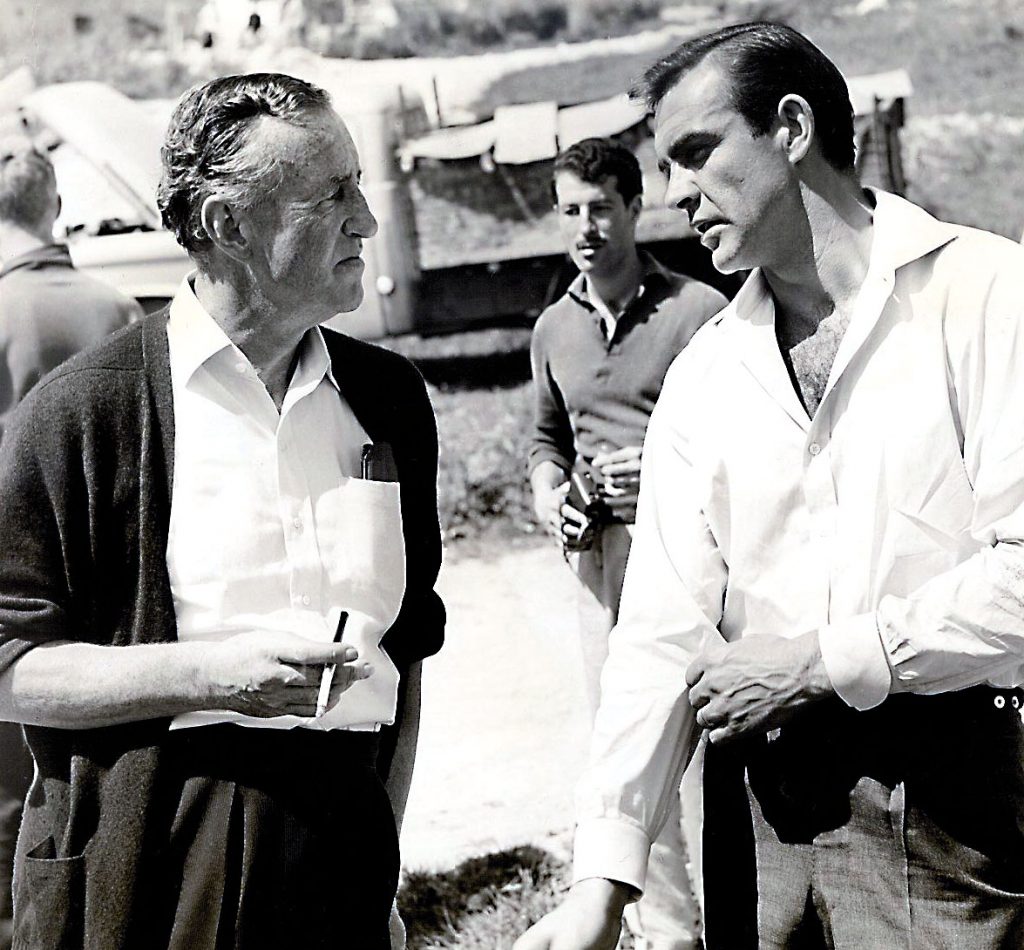 Albert Broccoli and Lewis Gilbert can supposedly be seen on the piazza during the Gondola chase in “Moonraker”. Peter Hunt has a brief cameo in the “OHMSS” pre-credit sequence. John Barry plays the conductor in “The Living Daylights”.
Albert Broccoli and Lewis Gilbert can supposedly be seen on the piazza during the Gondola chase in “Moonraker”. Peter Hunt has a brief cameo in the “OHMSS” pre-credit sequence. John Barry plays the conductor in “The Living Daylights”.

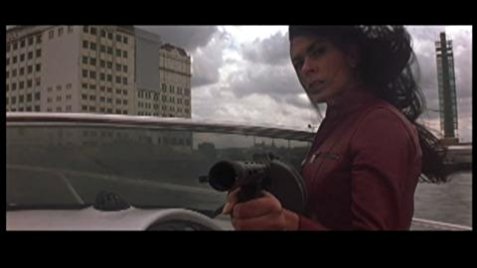
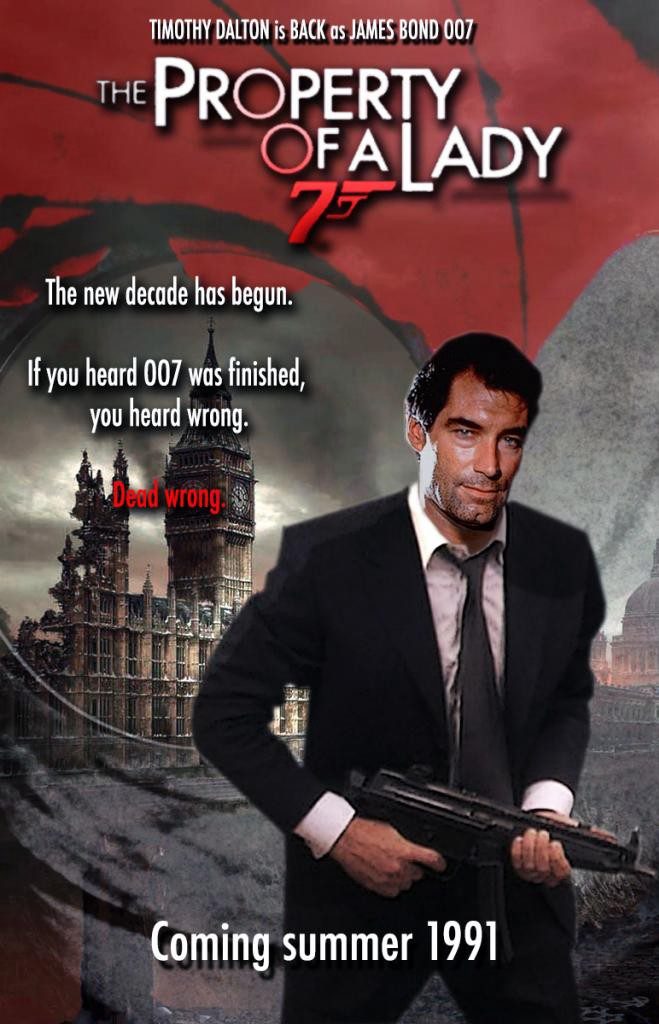
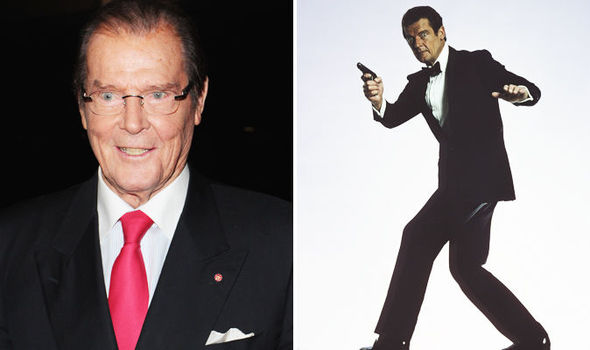
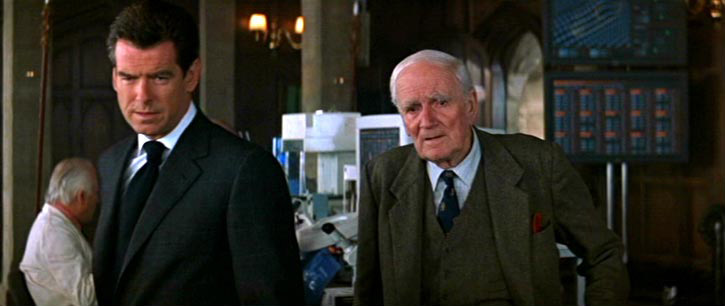

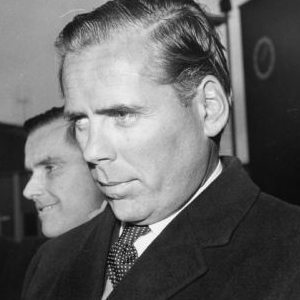
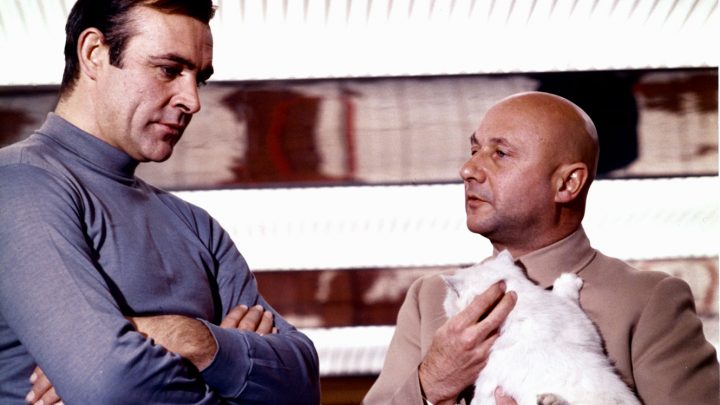
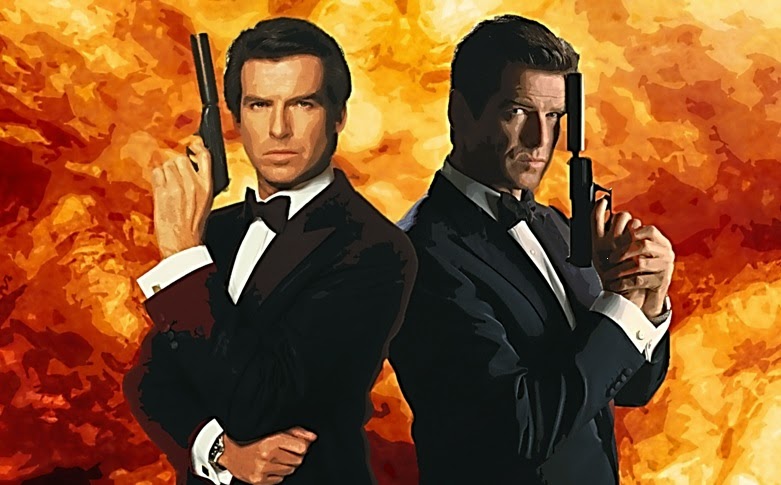

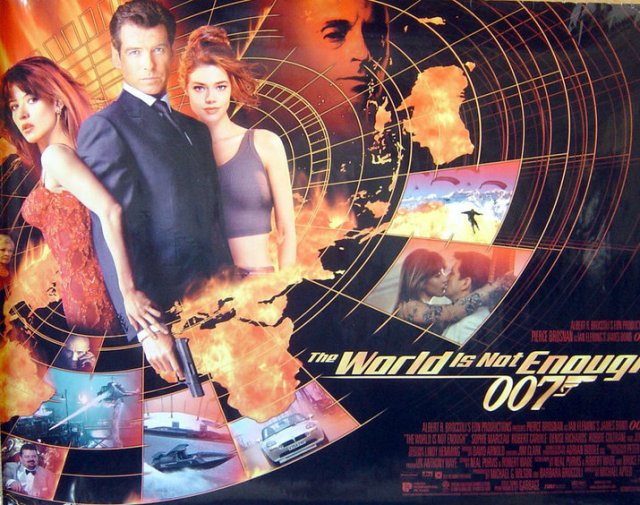
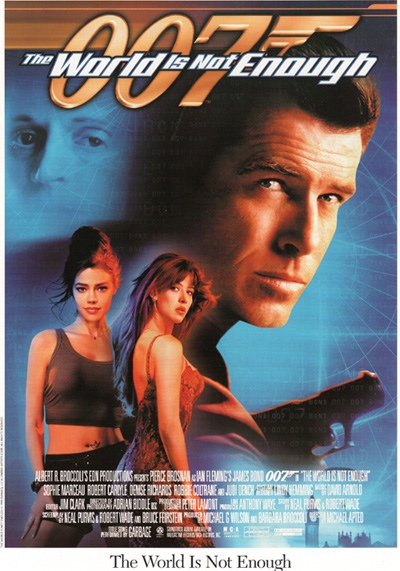
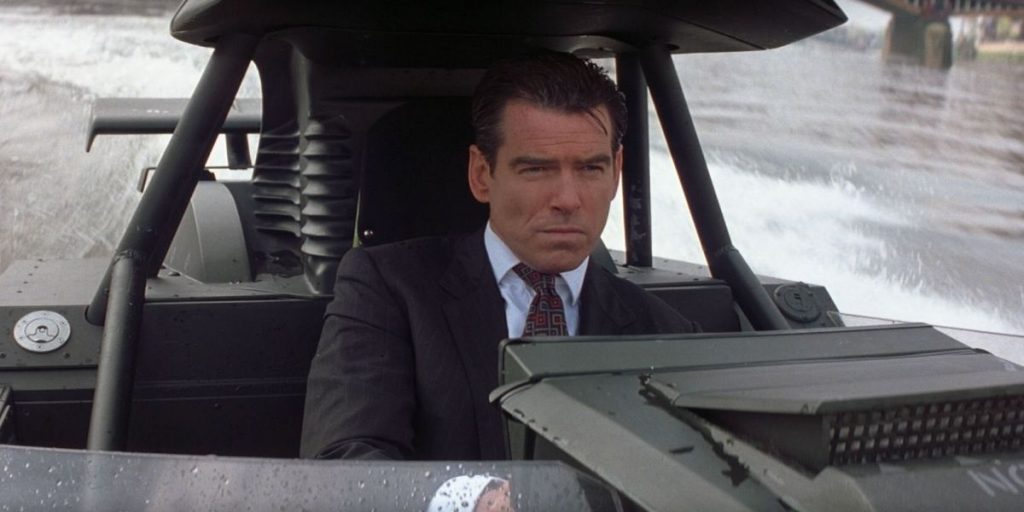

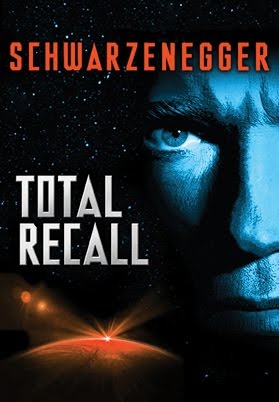
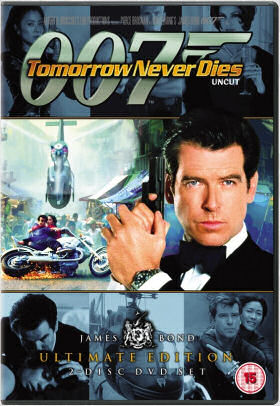
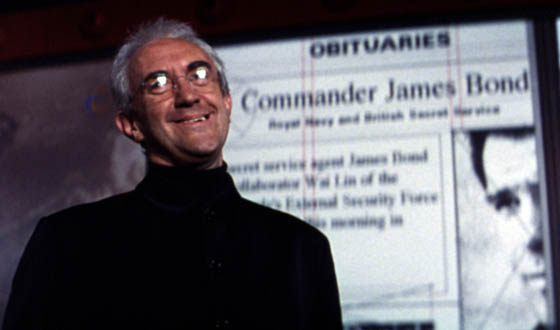


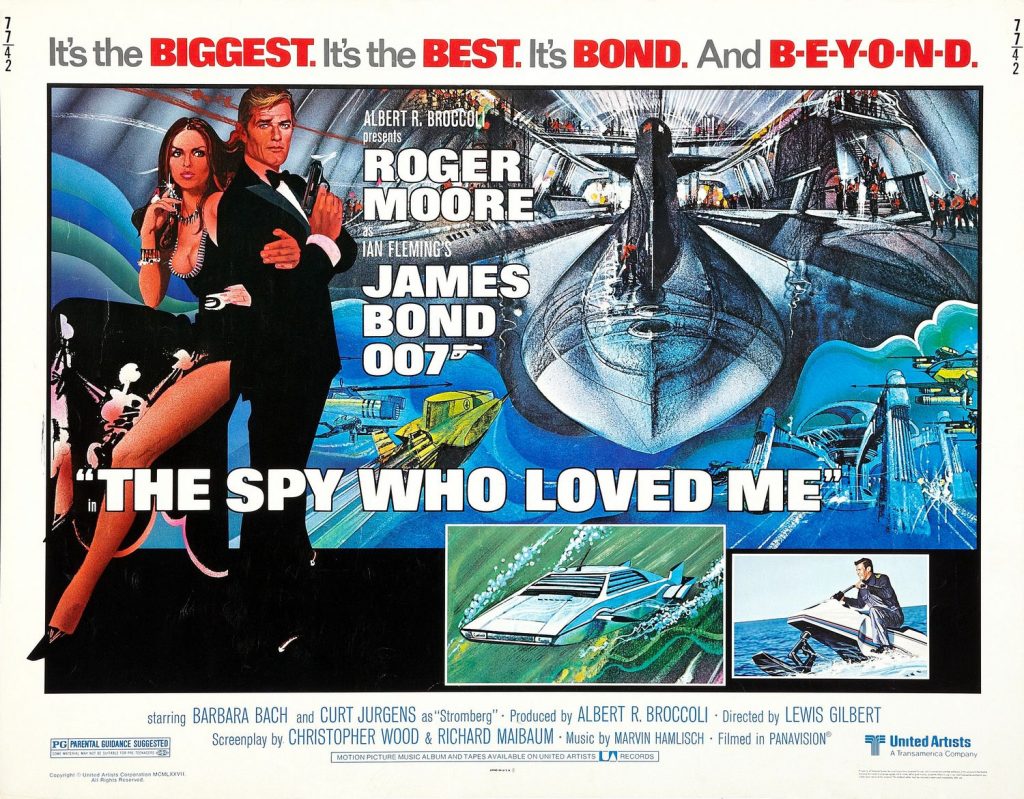
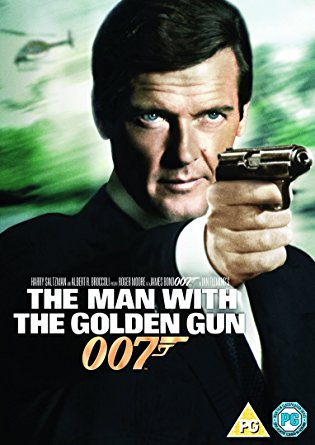
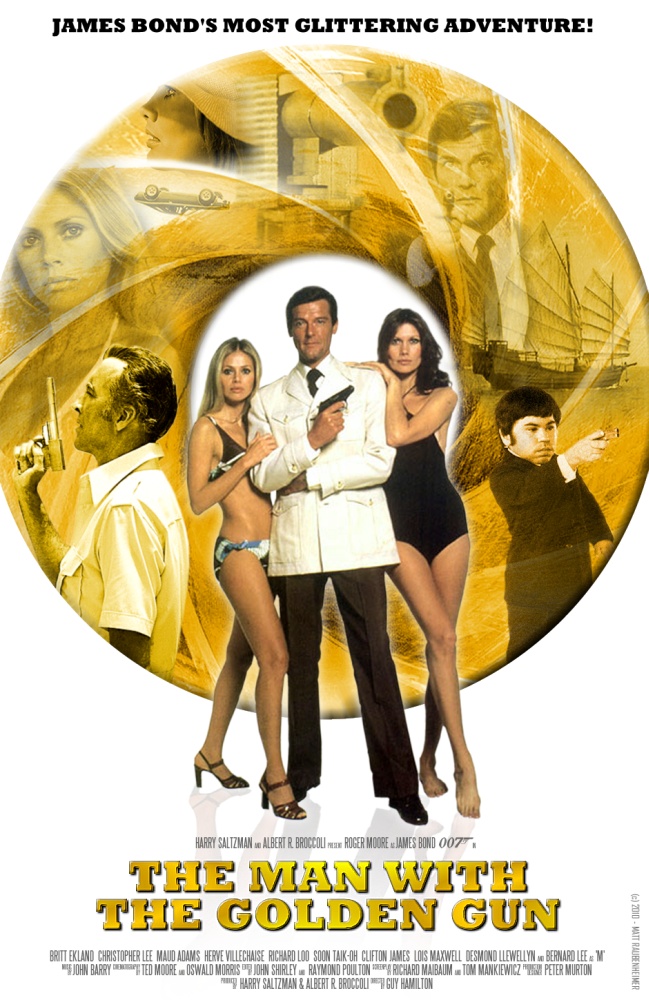
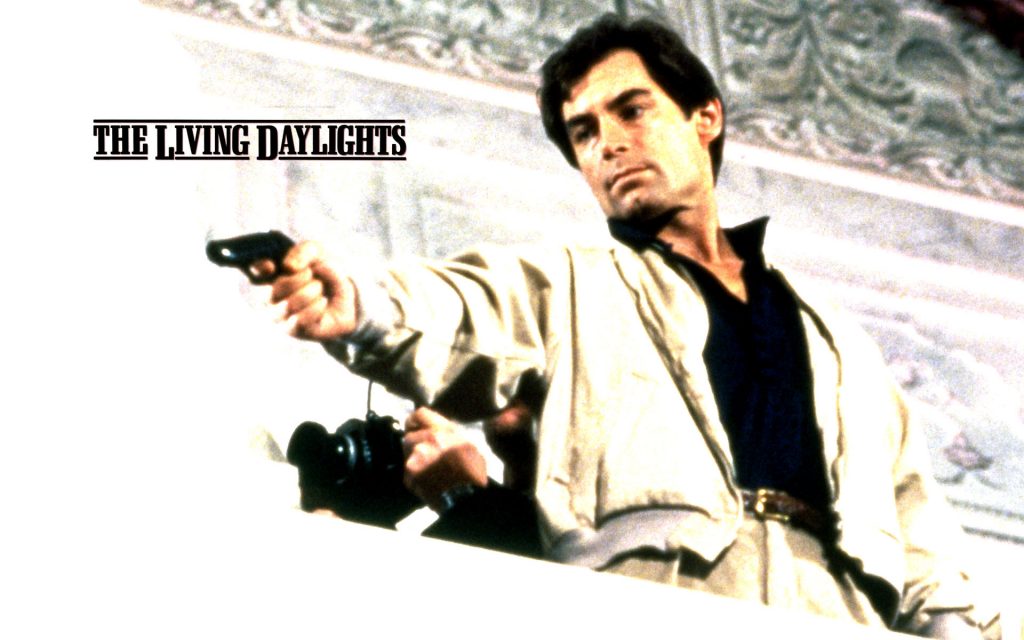 \
\